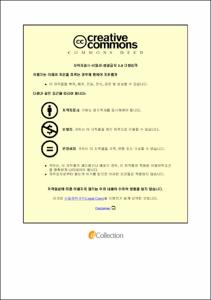미성어 보호 어업관리수단의 효과 분석
- Alternative Title
- Analyzing the effects of fisheries management measures for protecting immature fish
- Abstract
- Main purposes of fisheries management are to use fisheries resources persistingly and to maximize economic benefits. Thus, it would be biologically and economically more efficient to protect immature fish than to catch. Because fish grows up in the course of time so that it becomes reproductive and economically more valuable.
Unfortunately, two goals of fisheries management, sustainable use of fisheries resources and maximizing economic benefits, are generally conflicting in short-term. So, before an introduction of new fisheries measure or modification of existing one, it is vital to estimate the effect of the fisheries management measure.
A representative method for protecting immature fish is to set a minimum size limit on target fish. However, it is unrealistic to selectively catch fish above the minimum size limit in fisheries where a lot of fish are caught at a single operation. Then other measures limiting fishing efforts or catch amount can possibly be considered to reduce the amount of immature fish.
Seasonal closures limit fishing efforts for specific periods, and TACs(total allowable catch) limit yearly catches. These fisheries management measures could reduce expected catch and fishing revenue. By such means, fishing efforts would be reduced and redistributed over seasons. Of particular important in this regard is that fisheries productivity by target species and by fishing revenue are varied in season.
This study aimed to evaluate the effect of fisheries management measures for protecting immature fish, targeting Korean large purse seine fishery using ILP(integer linear programming). Seasonal closures and TACs are considered in 14 different scenarios. In order to evaluate the effects of seasonal closures and TAC, each scenario was compared to a baseline scenario that represents a status quo of Korean large purse seine fishery.
Model results showed that yearly fishing profit and catch of immature fish would fluctuate with change of the period of seasonal closures, and that not only does TAC limits an absolute amount of catch, but also affects the rate of immature fish among total catch.
Seasonal closures on March have positive effects on reducing immature fish of Jack mackerel. Seasonal closures On May, there is no significant difference with status quo. And TAC for Chub mackerel should decrease to 96 thousand tons to reduce immature fish catch to 16 thousand tons(catch of immature Chub mackerel in 2013).
- Issued Date
- 2016
- Awarded Date
- 2016. 2
- Type
- Dissertation
- Publisher
- 부경대학교 대학원
- Alternative Author(s)
- Seong Hoon Cheon
- Affiliation
- Depart of Marine & Fisheries Business and Economics, The Graduate School, Pukyong National University
- Department
- 대학원 해양수산경영학과
- Advisor
- 김도훈
- Table Of Contents
- Ⅰ. 서론 1
1. 연구의 배경 및 목적 1
2. 연구방법 및 내용 3
Ⅱ. 선행연구 4
1. 어업관리수단의 효과분석 선행연구 4
2. 선형계획법 활용 선행연구 9
Ⅲ. 대형선망어업의 현황 13
1. 어선세력 및 수지 현황 13
2. 생산 현황 15
Ⅳ. 분석방법 및 자료 20
1. 분석방법 20
2. 분석모형 21
3. 분석자료 23
Ⅴ. 분석결과 40
1. 월별 금어기 효과 분석 40
2. TAC 효과 분석 54
Ⅵ. 결론 59
참고문헌 62
- Degree
- Master
- Files in This Item:
-
-
Download
 미성어 보호 어업관리수단의 효과 분석.pdf
기타 데이터 / 1.17 MB / Adobe PDF
미성어 보호 어업관리수단의 효과 분석.pdf
기타 데이터 / 1.17 MB / Adobe PDF
-
Items in Repository are protected by copyright, with all rights reserved, unless otherwise indicated.